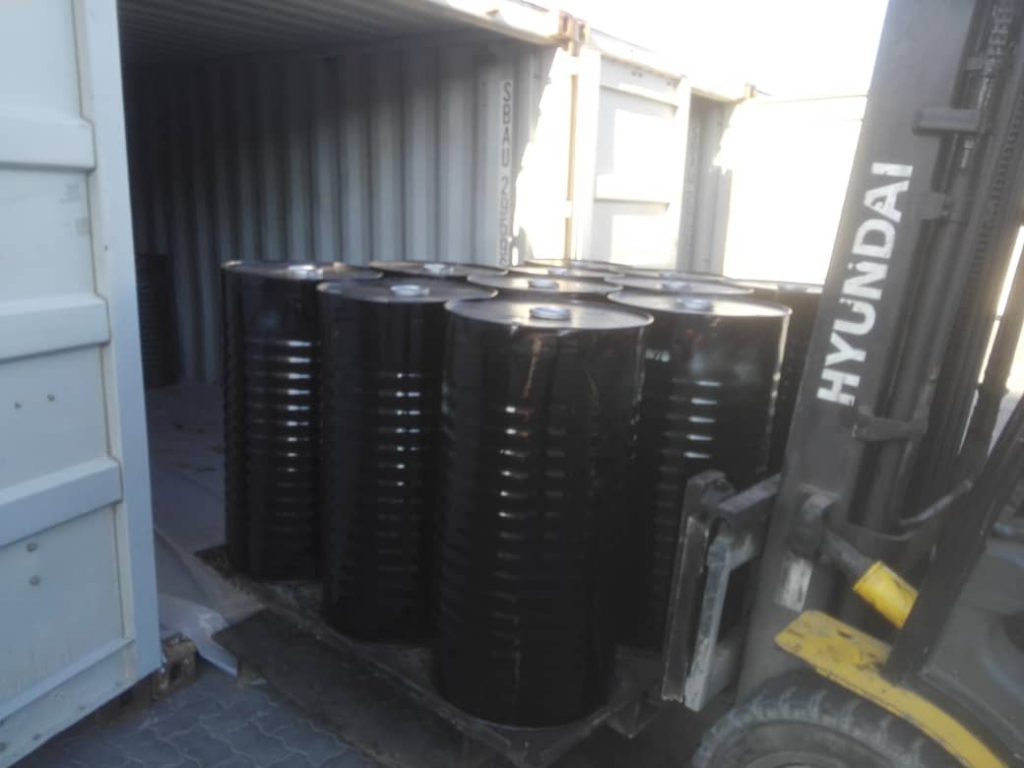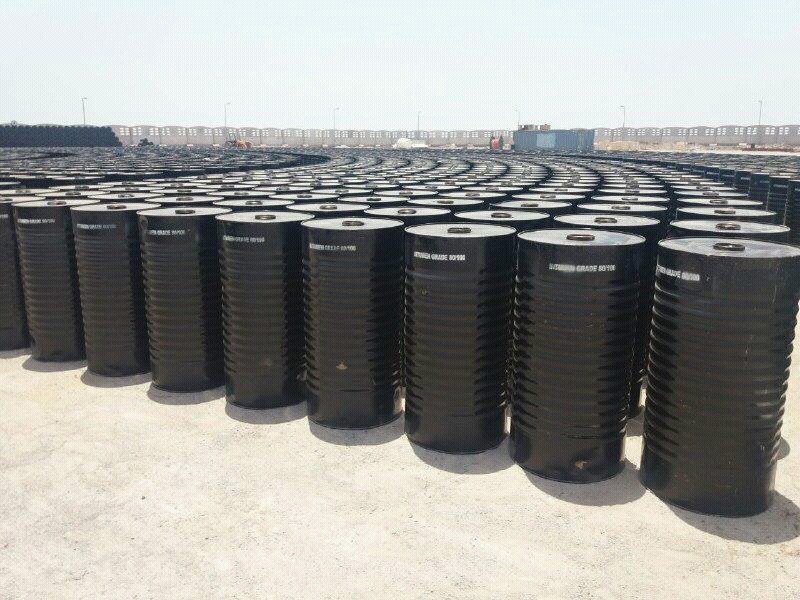Bitumen C600
Bitumen C600 Description

C600 is a paving grade bitumen manufactured to AS 2008 Table 2.2 and is primarily suitable for use in high modulus
base course asphalt.
Summary of benefits
The Viva standards to which C600 bitumen is made result in a very consistent bitumen with predictable handling and performance characteristics
Bitumen C600 Applications
C600 bitumen is the hardest paving grade bitumen available in Australia and is mainly used to produce high modulus
asphalt. Heavy-duty asphalt pavements need to be designed to accommodate significant traffic loadings for up to 40
years without exhibiting structural failure and hence, need to be constructed using appropriate materials. The load
spreading characteristics of pavement layers are governed by their stiffness and C600 bitumen facilitates the production of high modulus asphalt.
| Mixing Temperature | Holding time at Mixing Temperature | Medium term storage temperature | Medium term storage time | Maximum safe handling temperature |
| 175 – 185°C | 14 days | 130-150°C | 30 days | 190°C |
Health & safety
C600 is unlikely to present any significant health or safety hazard when properly used in the recommended
an application where good standards of industrial practice are maintained.
Bitumen C600 Typical characteristics
| Description | Units | Methods | Typical |
| Viscosity at 60° | Pa.s | AS 2341.2 | 600 |
| Viscosity at 135° | Pa.s | AS 2341.2 | 0.7 |
| Pen at 25° | dmm | AS 2341.12 | min 20 |
| Flashpoint | °C | AS 2341.14 | max 250 |
| Viscosity of residue at 60° C (% of original) | Pa.s | AS 2341.2 | max 300 |
Bitumen, also known as asphalt in the United States, is a substance that forms through the distillation of crude oil. It has waterproofing and adhesive properties. Bitumen production through distillation removes lighter crude oil components, such as gasoline and diesel, leaving the “heavier” Asphalt behind. The producer often refines it several times to improve its grade. Bitumen can also occur in nature: Deposits of naturally occurring bitumen form at the bottom of ancient lakes, where prehistoric organisms have since decayed and have been subjected to heat and pressure.
Bitumen Classification
Bitumen Classification

Bitumen classification is according to viscosity (degree of fluidity) gradings. The higher the grade, the stiffer the bitumen. Most high performing roads in Australia are built and maintained using bitumen because it is durable and has exceptional waterproofing and adhesive properties. Bitumens used in road construction and maintenance are refined and blended to meet strict road engineering requirements and industry specifications.
Paving Grade Bitumen Class 170
Class 170 bitumen is widely used in sprayed sealing and light asphalt applications to provide durability and fatigue resistance. It is also used to manufacture cutback bitumens, bitumen emulsions, and modified bitumens.
Paving Grade Bitumen Class 240
Class 240 bitumen is for use in sprayed sealing applications where the local road agency has a preference for a slightly more viscous bitumen than Class 170.
Paving Grade Bitumen Class 320
Class 320 bitumen is most commonly used to manufacture asphalt mixes. Due to its higher viscosity, stiffer asphalt mixes can be produced to improve resistance to shoving and other problems associated with higher temperatures and traffic loads.
Paving Grade Bitumen Class 450
Class 450 bitumen is for use in the manufacture of asphalt mixes where the local road agency has a preference for a slightly more viscous bitumen than Class 320.
Bitumen Class 600
Class 600 bitumen is primarily used to manufacture extra heavy-duty asphalt pavements that need to endure substantial traffic loadings.
Applications
The table below shows typical applications for paving grade bitumens:

Application Temperature Recommendations
| Type | C170 | C240 | C320 | C450 | C600 |
| Asphalt Mixing | 150 – 160°C | 155 – 165°C | 155 – 165°C | 160 – 170°C | 165 – 175°C |
| Asphalt Compaction | 135 – 150°C | 140 – 155°C | 140 – 155°C | 145 – 160°C | 150 – 165°C |
| Sprayed Sealing | 175 – 185°C | 180 – 190°C | 180 – 190°C | N/A | N/A |
Typical Characteristics
| Type | C170 | C240 | C320 | C450 | C600 |
| Viscosity at 60°C, Pa.s | 170 | 240 | 320 | 450 | 600 |
| Viscosity at 135°C, Pa.s | 0.4 | 0.45 | 0.53 | 0.66 | 0.8 |
| Viscosity at 60°C, after RTFO, Pa.s | 300 | 470 | 640 | 920 | 1300 |
| Penetration at 25°C, dmm | 70 | 58 | 46 | 36 | 27 |
| Flashpoint, 60°C | 360 | 360 | 360 | 360 | 360 |
| Viscosity of residue at 60°C, % of original | 180 | 190 | 200 | 205 | 215 |
| Density at 15°C, kg/m3 | 1.04 | 1.04 | 1.04 | 1.04 | 1.04 |
Storage & Handling
The storage of bitumens for prolonged periods at elevated temperatures should be avoided as quality may be adversely affected. As a general rule, bitumen should be stored at the lowest temperature that enables practical use. For normal operations, such as blending and transferring liquid bitumen, temperatures of 10°C to 40°C above the minimum pumping temperature are recommended.

Health & Safety
To ensure hot bitumen is used safely and efficiently the following safety precautions must be followed:
– Wear suitable personal protective equipment (PPE) at all times. Full skin protection is required to avoid accidental burns when transferring or handling hot bitumen.
– Always prevent contact between water and hot bitumen by checking the contents of the previous load before loading bituminous products into tankers and by following procedures to avoid violent boil-over of tanks.
– Avoid exposure to fumes by standing back on the gantry or upwind until the vapors have dispersed.
– Minimize bitumen fume by heating bitumen and asphalt products to the recommended temperatures.
– Minimize the use of diesel when cleaning equipment as this contributes to the bitumen fume.
